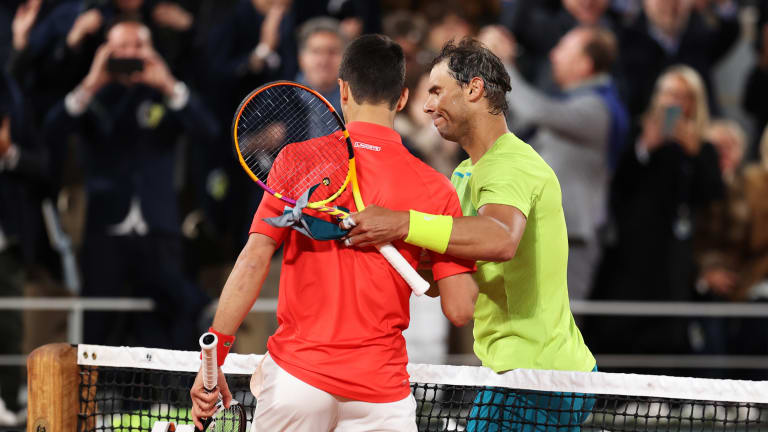Roland Garros
Three historical implications of Nadal vs. Djokovic LIX—Rafa's memorable win over Novak at Roland Garros
By Jun 01, 2022Roland Garros
Was the Carlos Alcaraz-Jannik Sinner Roland Garros match the best ever played?
By Jun 13, 2025Roland Garros
Who were the winners and losers at 2025 Roland Garros?
By Jun 09, 2025Roland Garros
Carlos Alcaraz and Jannik Sinner played the match of the decade, and maybe the century, at Roland Garros
By Jun 09, 2025Roland Garros
PHOTOS: Carlos Alcaraz captivates Chatrier with trademark joy after improbable Roland Garros title defense
By Jun 09, 2025Roland Garros
Carlos Alcaraz saves three match points, tops Jannik Sinner in longest Roland Garros final of Open Era
By Jun 08, 2025Roland Garros
Aryna Sabalenka clarifies controversial Coco Gauff claim: "Can't pretend it was a great day"
By Jun 08, 2025Roland Garros
Coco Gauff counters Aryna Sabalenka's Roland Garros claim by saying she 'wanted' Iga Swiatek in final
By Jun 08, 2025Roland Garros
2025 Roland Garros men's final preview: Carlos Alcaraz vs. Jannik Sinner
By Jun 07, 2025Roland Garros
PHOTOS: Coco Gauff celebrates Roland Garros title with parents, toasts champagne at Tennis Channel set
By Jun 07, 2025Three historical implications of Nadal vs. Djokovic LIX—Rafa's memorable win over Novak at Roland Garros
As their rivalry has evolved—strengthening both men—Wimbledon looms even larger.
Published Jun 01, 2022
Advertising
Advertising

Rafael Nadal is two match wins away from earning Slam No. 22—two ahead of both Novak Djokovic and Roger Federer. Meanwhile, the Serbian is on a bit of a mini-drought at the majors.
© Ryan Pierse
Advertising

Foe Knows: How to keep up with your favorite teams around the 🌏
The diehard basketball fan hasn’t let jet lag or a few hours' time difference stop him from keeping up with the NBA Playoffs.